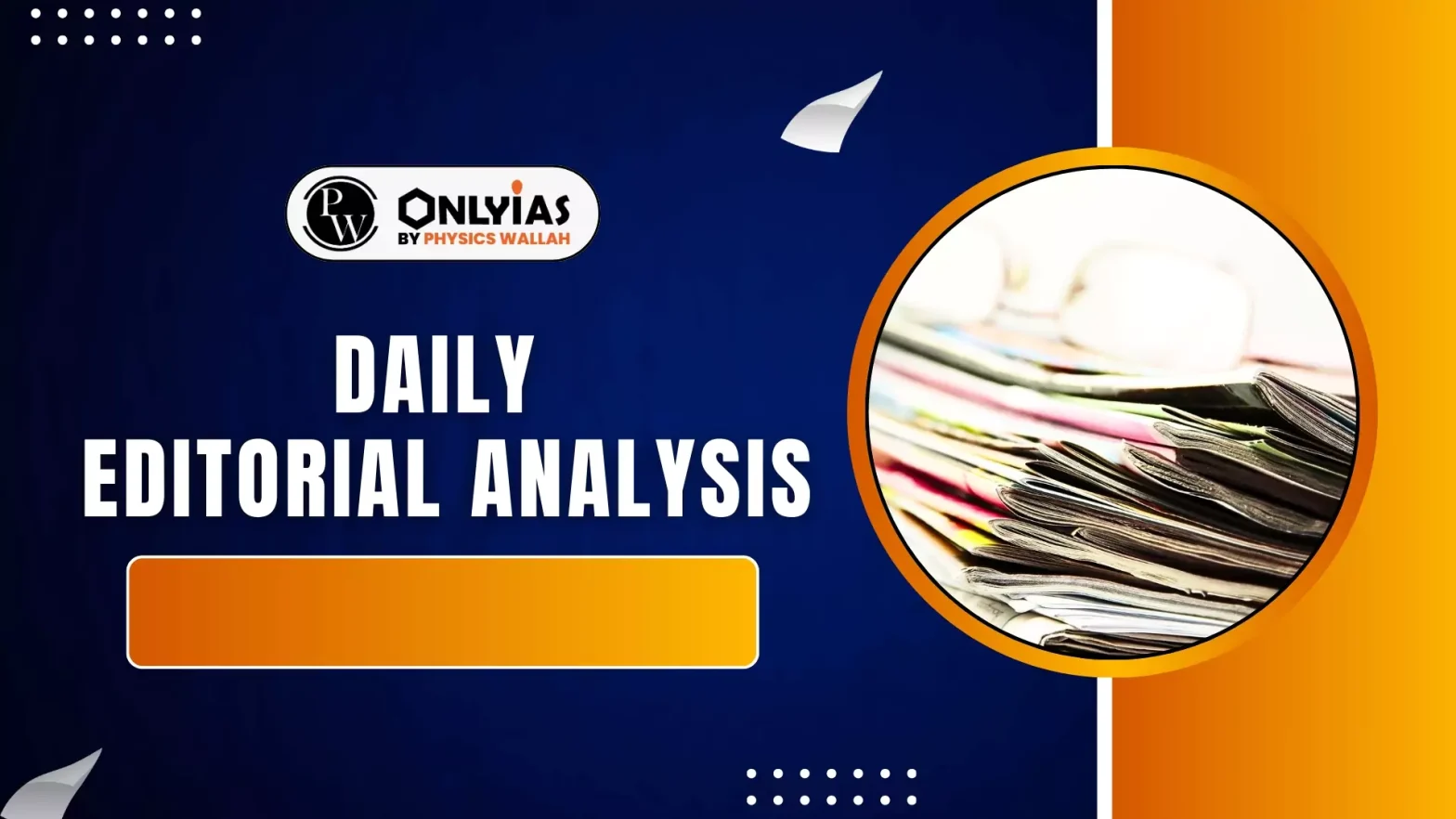India, the “Pharmacy of the World,” faces a critical threat from substandard and falsified drugs (SF) that undermine public health and global trust.
India’s Global Pharmaceutical Status
- Global Reach and Impact: India supplies over 60% of the world’s vaccine demand, meaning six out of every ten vaccines administered globally are Made in India.
- The nation also provides 40% of generic medicines to the United States and 25% of all medicines to the United Kingdom.
- Our affordable, high-quality medicines have saved millions of lives, particularly in low- and middle-income countries, and are critical for domestic initiatives like Jan Aushadhi and Ayushman Bharat.
- About Generic Medicines: Generic medicines are cost-effective alternatives produced after the original drug’s patent expires.
- They are cheaper as they do not incur the initial research and development costs, making India a world leader in their production.
- Economic Footprint and Trust: India’s pharmaceutical exports crossed $25 billion in 2023.
- The presence of over 650 US Food and Drug Administration (FDA)-approved manufacturing facilities in India is a testament to the global trust placed in our quality standards and a source of national pride.
The Growing Threat of Substandard and Falsified (SF) Drugs
- About Substandard Drugs: Substandard drugs are those that do not meet quality standards and specifications, often due to poor manufacturing practices or inadequate quality control.
- About Falsified Drugs: This represents a deliberate criminal act involving cheating. The fake drugs copy branding and packaging, containing inactive substances like chalk powder, or even harmful chemicals, produced for illicit profit.
- Data: A 2023 study estimated that approximately 20% of medicines sold in India could be counterfeit or substandard.
- Globally, the World Health Organization (WHO) warns that one in ten medical products in low- and middle-income countries is SF.
- Risk of SF: Everyone is at risk of encountering substandard and falsified medical products, including
- vulnerable populations
- countries lacking social protection
- countries with weaker health systems
- individuals buying medical products from unauthorized sources (including online)
- countries with a disrupted supply chain
- countries with an increased demand for specific medical products.
- Tragic Human Deaths due to SF:
- International Incidents: In 2022, an Indian-made cough syrup was tragically linked to the deaths of over 70 children in Gambia.
- Similar devastating incidents were reported in Uzbekistan and Cameroon, severely damaging India’s international credibility and image.
- Investigations revealed the cough syrup contained poisonous industrial solvents like diethylene glycol and ethylene glycol.
- Domestic Impact: The presence of fake drugs means cancer patients receive ineffective chemotherapy, while other patients suffer from worsening illnesses or misdiagnosis, leading to prolonged suffering and financial ruin for families.
Consequences of SF
- Direct Health Impacts: Fake drugs offer no cure, worsen health conditions, and harmful chemicals can directly injure or kill.
- Incorrect antibiotic dosages contribute significantly to Antimicrobial Resistance (AMR), rendering vital medicines ineffective against infections.
- Erosion of Trust: When medicines fail, patients lose fundamental trust in doctors, the healthcare system, and the very efficacy of drugs. This broken trust is exceptionally difficult to rebuild.
- Economic and Geopolitical Damage: India’s $25 billion pharmaceutical export market faces severe jeopardy. The nation’s “Pharmacy of the World” title, a symbol of its soft power and national pride, is at stake, risking its global standing.
- Undermining National Schemes: Crucial public health initiatives like Ayushman Bharat, designed to provide health coverage to 50 crore Indian households, are fundamentally compromised if the medicines supplied are fake, hindering the achievement of intended health outcomes.
Government’s Response to SF
- Raids on illegal manufacturing units and seizure of fake consignments,
- Mandatory implementation of QR codes on top-selling medicines for authenticity verification,
- Upgrading Central Drugs Testing Laboratories to ensure faster and more accurate testing, Introduction of a Track and Trace mechanism to make the supply chain transparent from manufacturing to consumer.
Obstacles In tackling SF
- Limited Public Awareness: A significant portion of the population, particularly in rural areas, lacks the awareness or technical know-how to use tools like QR codes for medicine verification.
- Rural Vulnerability: Rural India, with its fragmented medical access, remains highly susceptible to unlicensed pharmacies and unverified medicines, posing a dual challenge of providing genuine drugs and preventing fakes.
- Supply Chain Infiltration: Despite robust Track and Trace systems, corruption and opacity can create leakages, allowing counterfeit drugs to infiltrate legitimate supply chains.
- Weak Enforcement and Coordination: Existing laws are often not adequately enforced, and there is a critical lack of coordination between Central and State Drug Authorities.
- Flawed Mindset: The production and distribution of fake drugs is often treated as a mere technical violation rather than a grave criminal act with deadly consequences.
Way Forward
- Strengthening Laws and Enforcement: It is crucial to amend legislation, such as the Drugs & Cosmetic Act 1940, to classify the production and sale of fake drugs as culpable homicide, ensuring swift, exemplary, and deterrent punishment.
- There must be enhanced coordination between Central and State Drug Authorities, with enforcement agencies receiving adequate resources and being held accountable for their results.
- Mandatory Industry Self-Regulation: The pharmaceutical industry must proactively adopt and invest in tamper-evident packaging, advanced serialisation (assigning unique codes to each medicine strip), and real-time supply chain tracking technologies.
- Rigorous audits, stringent quality assurance checks, and active collaboration with regulators to report irregularities are non-negotiable.
- Empowering Retailers and Pharmacists: Chemists and pharmacists serve as vital gatekeepers.
- They must exercise extreme vigilance, sourcing inventory exclusively from authorised distributors and unequivocally rejecting any stock lacking proper certification or traceability.
- Public Awareness Campaigns: Launch extensive “Jaago Grahak Jaago” (Wake Up, Consumer) style campaigns across all major media platforms—television, radio, digital channels, and leveraging social media influencers—to educate the public on identifying and verifying genuine medicines.
- Use of Technology: Technology, while not a silver bullet, is a potent enabler.
- Advanced AI applications can be explored for error detection in drug filing, summarising vast evidence, and substantially reducing judicial research time, thereby enhancing efficiency in drug regulation and related legal processes.
- Collaborative and Determined Action: This crisis necessitates an “all-of-government, all-of-industry, and all-of-society approach”.
- Robust collaboration among industry players, regulatory bodies, law enforcement, and the public is paramount.
- Strong willpower and determination from leaders within both the legal and pharmaceutical sectors are critical to drive these essential reforms.
Conclusion
The integrity of India’s pharmaceutical industry transcends mere economic interest; it impacts the health and trust of 1.4 billion Indians and countless millions globally who depend on “Made in India” medicines.
- This is a national crisis demanding immediate, ambitious, and resolute action, not incremental steps.
- The imperative is to act now, ensuring that every pill/drug/medical product bearing a “Made in India” label carries with it an unshakable assurance of safety, efficacy, and integrity.
![]() 23 Aug 2025
23 Aug 2025


